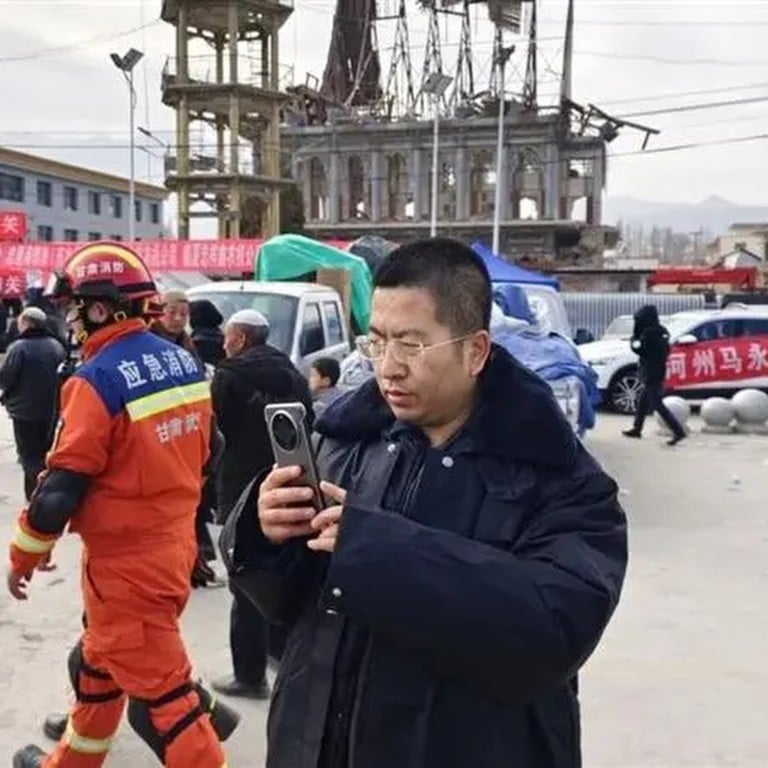
How Chinese scientists made satellite calls on smartphones possible – it was all down to Project Babel
- A 2008 earthquake in China has led to technological advances, with some smartphones now able to support satellite calls
- In trying to solve the issue of passive intermodulation, Chinese scientists have created the world’s first simulation software
More than 80,000 people lost their lives in a disaster compounded by disruptions to communications in many towns, which hindered rescue efforts.
Following the tragedy, the Chinese government quietly launched the Tiantong Project to set up a satellite communication system accessible to everyone, regardless of socio-economic status.
Now, 16 years on, the project has led to major advances in satellite communication and new trends in mobile phone development.
Tiantong means “connecting with heaven” and it echoes the biblical story of the Tower of Babel.
Satellite communication will gradually become popular among the general public
Now, ordinary Chinese mobile phone users can dial any number via the Tiantong satellite in places without signal coverage, such as deserts or isolated islands, by paying an additional 10 yuan (US$1.38) per month.
But this time, many of those caught up in the disaster were able to connect with the outside world through the satellite calling function on their smartphones. The death toll from this earthquake stood at around 150.
It was previously believed to be impossible for a remote communication satellite to exchange information with a large number of mobile phones on the ground.
Taiwan quake: Taipei rebuffs aid offer from mainland China amid deadly disaster
In the biblical story, the Tower of Babel failed because the workers began speaking different languages and became confused with each other. Similar interference can happen to satellite communication.
These randomly occurring signals can degrade the quality of satellite calls and, in severe cases, can cause the entire system to collapse.
Since the 1970s, nearly all commercial communication satellite networks run by the US, Europe and international organisations have experienced major failures due to these signals falling within the receiving frequency band.
This issue, known as passive intermodulation (PIM) among telecommunications engineers, has become a bottleneck for further development of satellite communication technology. Although many people are eager to solve this problem, there is currently no universally effective technology to suppress the occurrence of PIM.
According to Cui’s team, China’s Tiantong Project has gathered communication technology elites from across the country to tackle this “technical challenge of common concern in the international aerospace community”.
Different metal components in huge satellite antennas come into contact with each other, leading to the main source of PIM.
Chinese physicists have delved deep into the microscopic physical mechanisms such as quantum tunnelling and thermal emission at the contact interface, discovering a series of new physical laws that accurately describe silver-plated and gold-plated microwave components.
New York area hit by rare magnitude 4.8 earthquake
They have also established a physical model that can predict the occurrence of PIM effects with unprecedented precision under various contact states, connection pressures, temperatures, vibrations and other external factors.
This powerful software has helped Chinese engineers develop effective PIM suppression techniques, including dielectric isolation capacitors and optimised mesh antenna wire preparation and weaving methods.
Cui’s team has further developed the world’s most sensitive PIM detection technology, which can instantly locate the site of PIM generation when it occurs at extremely weak levels.
This allows the satellite to achieve unprecedented reception sensitivity, enabling signals from smartphones without external antennas to be captured and identified by antennas tens of thousands of kilometres away.
Each Tiantong satellite is designed to have a lifespan of 12 years, and its antenna undergoes daily temperature changes of up to 160 degrees Celsius (320 degrees Fahrenheit) while simultaneously transmitting and receiving electromagnetic waves in 800 different frequency bands.
Solving the PIM problem in such harsh working conditions is extremely challenging. “The development of the Tiantong-1 satellite system is inseparable from multiple key technological breakthroughs,” Cui’s team wrote in the paper.
“Its success is a testament to the hard work of the project team and marks China’s leading position in this technical field around the globe.”
China has applied for a large number of patents for the Tiantong satellite, which means that Chinese hi-tech companies do not need to worry about patent barriers or sanctions from the West when using this revolutionary technology.
Taiwan earthquake response poses early test for president-elect’s leadership
Operating in a low-Earth orbit just a few hundred kilometres high, these satellites have small antenna areas, reducing PIM interference. However, since a satellite can only stay above a certain area for a short period, deploying a large number of satellites is necessary to achieve wide-area, full-time coverage.
Currently, most of the more than 5,000 Starlink satellites launched by SpaceX do not have the functionality to connect with mobile phones.
With the maturation of Starship technology, the launch speed of Starlink satellites is likely to increase significantly, while China has yet to develop a mature recoverable rocket technology to compete.


